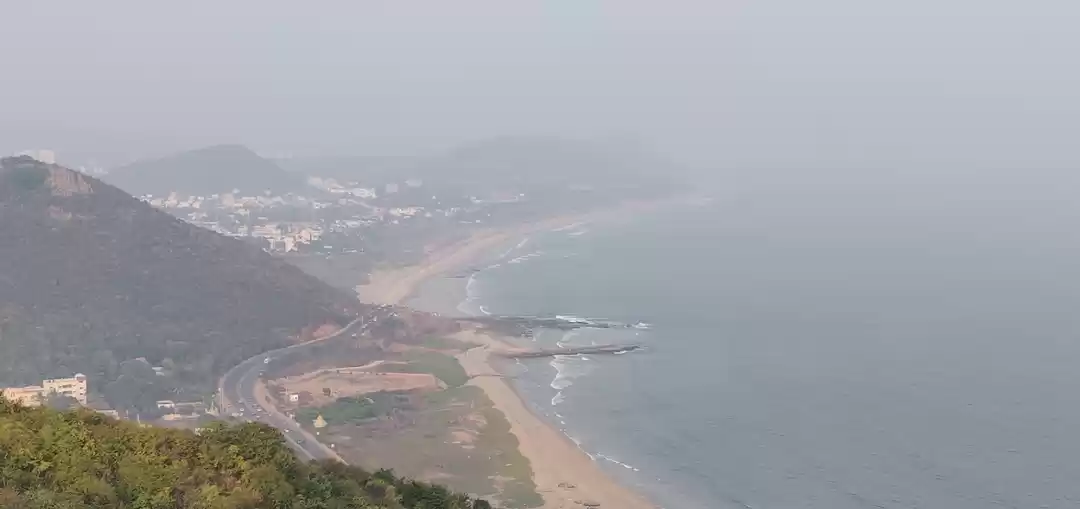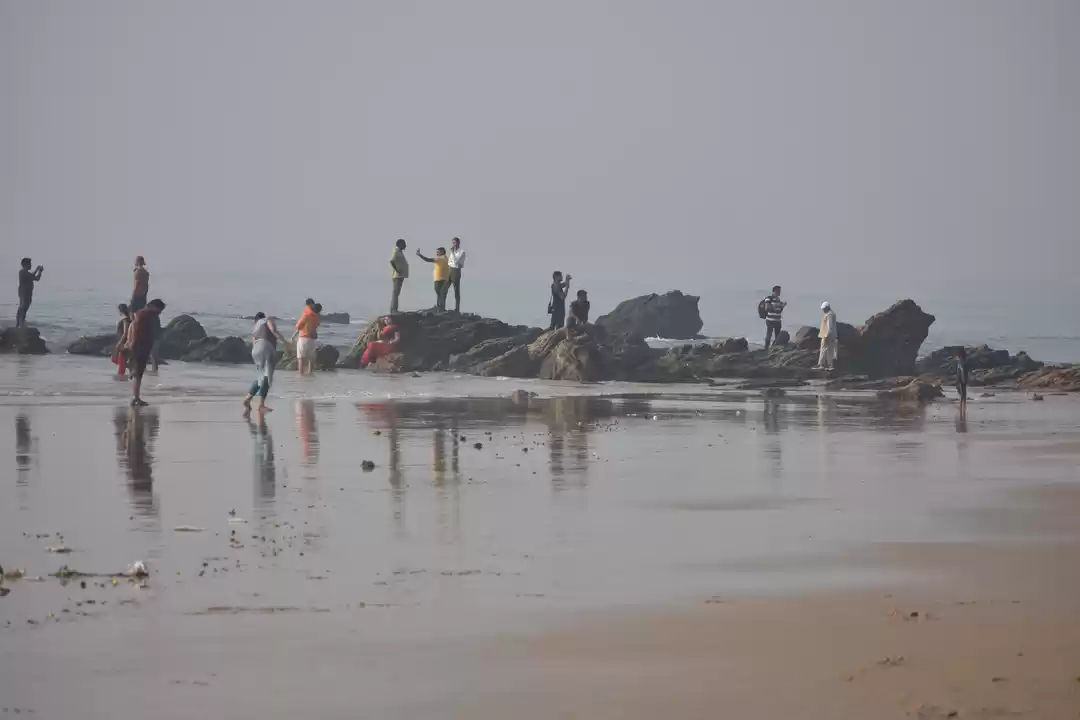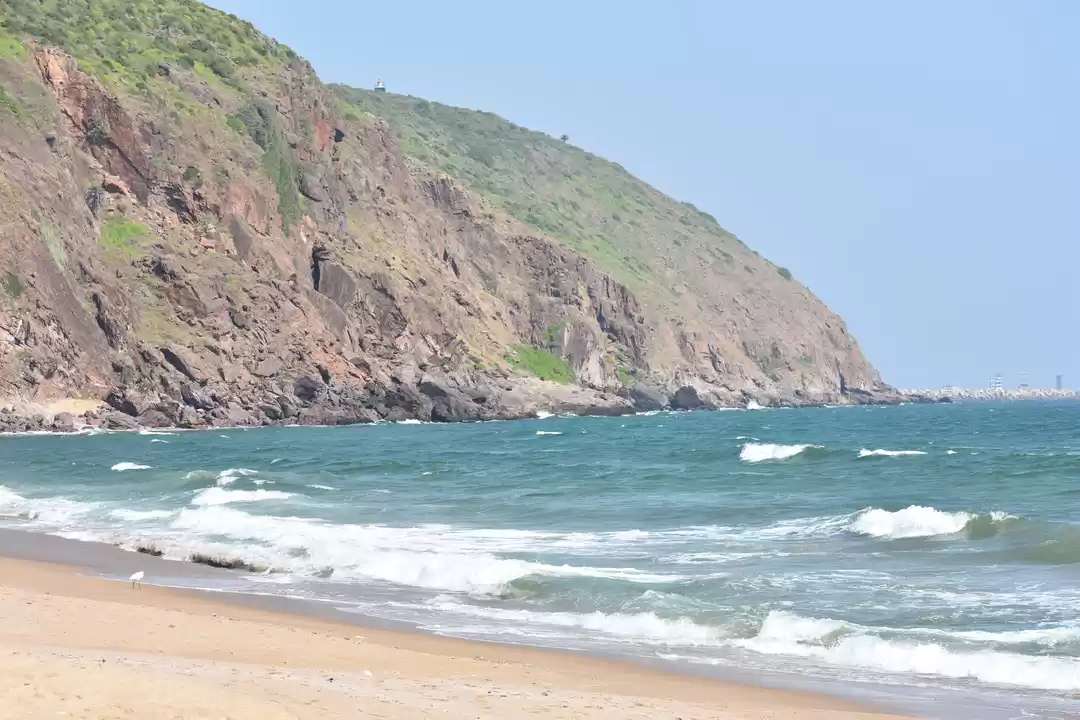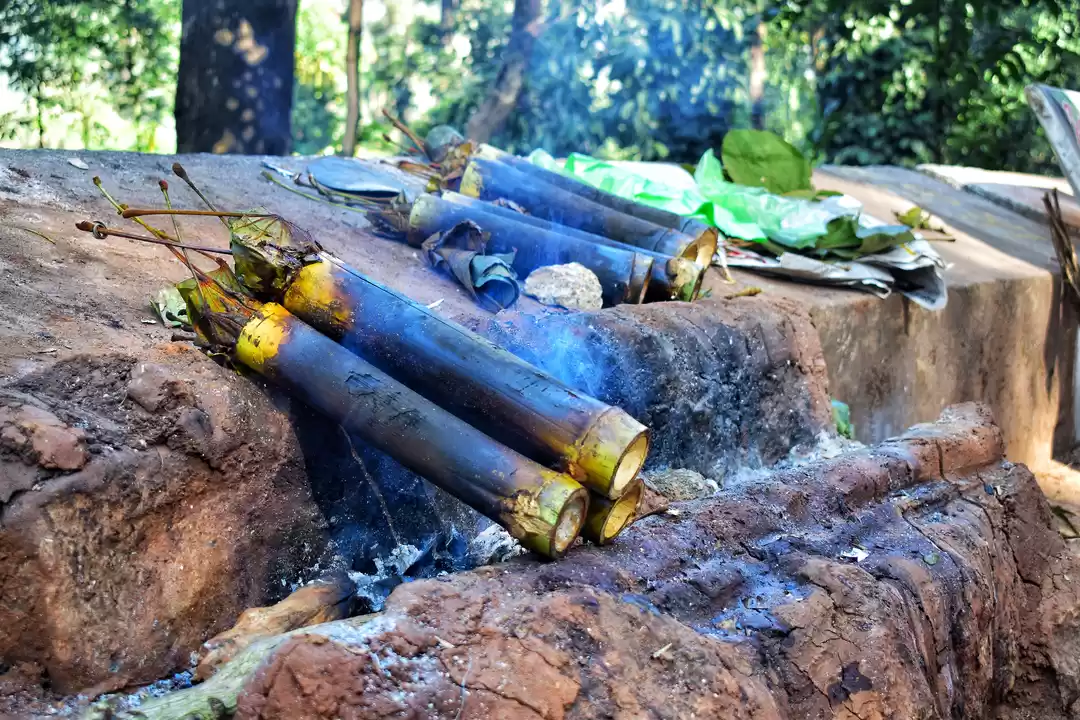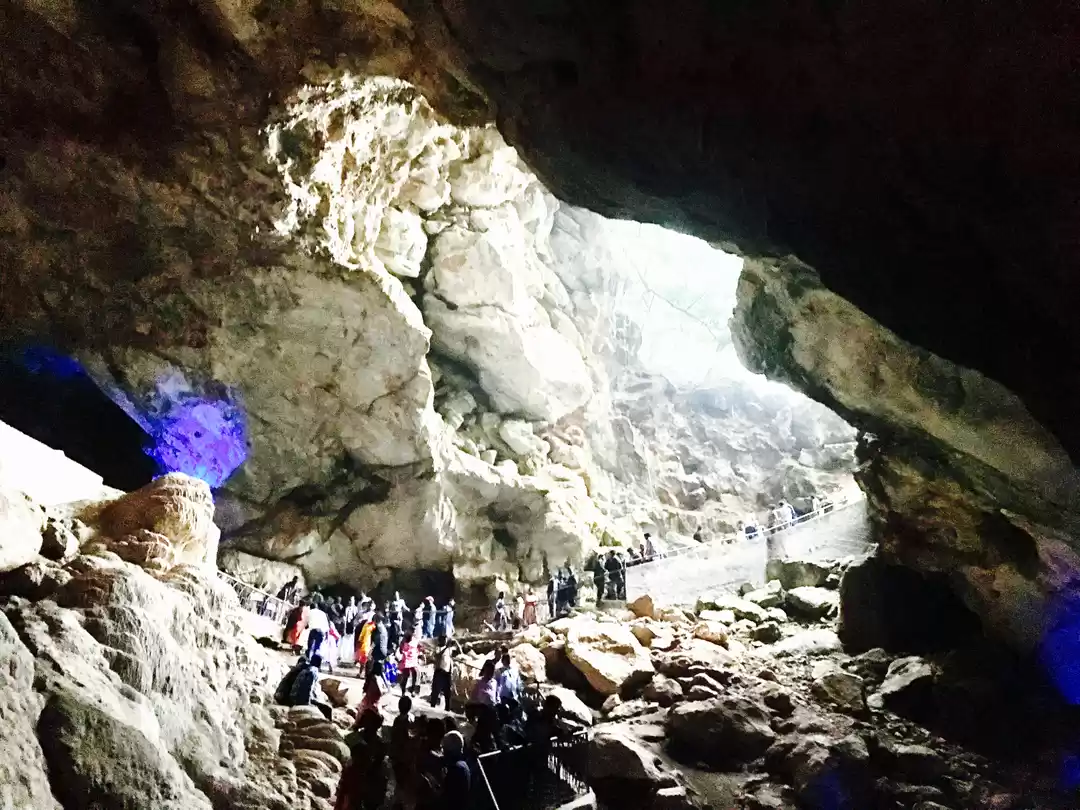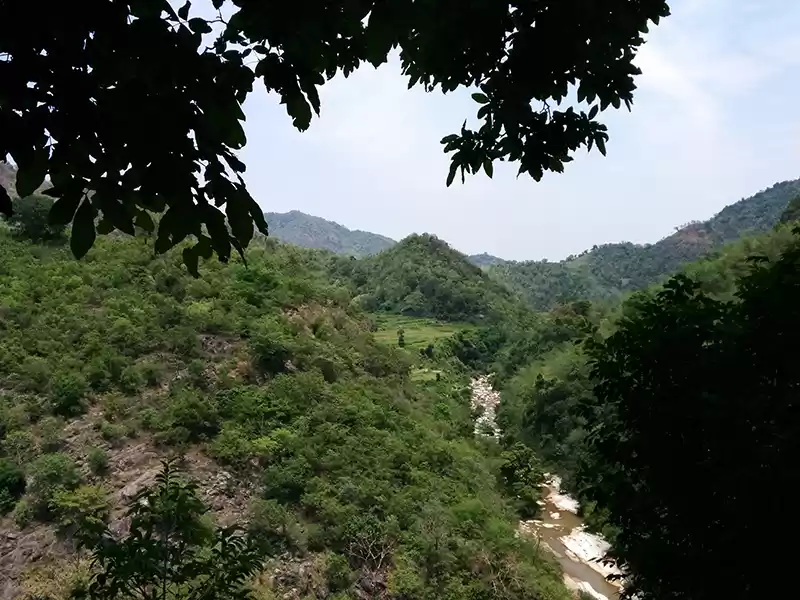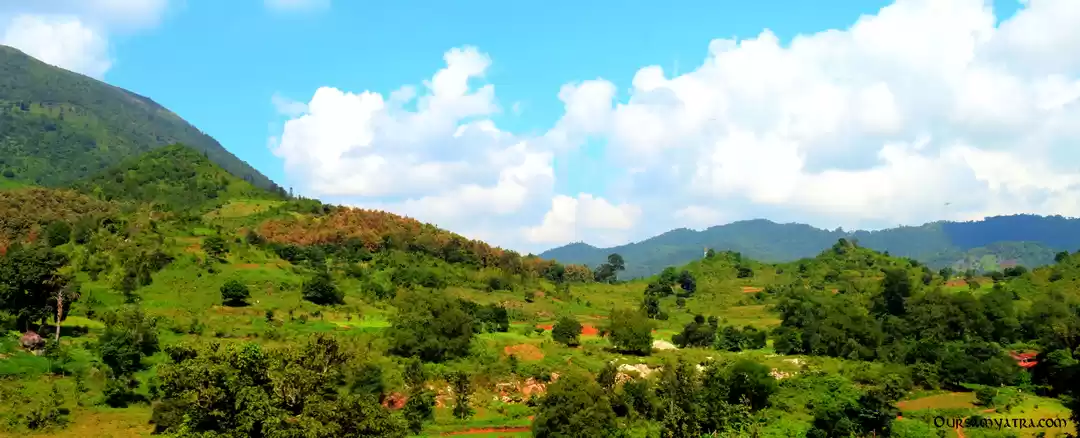Have you ever wondered what lies beneath the surface of the earth? How about exploring one of the largest and oldest caves in India, where you can witness the marvels of nature and the mysteries of history? If you are looking for an adventurous and enriching experience, then you should visit the Borra Caves in Vizag, Andhra Pradesh.
The Borra Caves, also known as the Borra Guhalu, are located in the Ananthagiri Hills of the Eastern Ghats, about 90 km from Visakhapatnam. They are one of the most popular tourist attractions in the region, attracting thousands of visitors every year. The caves are famous for their spectacular formations of stalactites and stalagmites, their fascinating legend, and their sacred Shiva Lingam.
In this article, we will take you on a journey into the heart of the earth, and tell you everything you need to know about the Borra Caves, such as their history, formation, significance, features, and how to reach them. We will also give you some tips and advice on the best time to visit, the timings and entry fees, and the nearby attractions, such as the Araku Valley, the Coffee Museum, and the Tribal Museum. So, let’s get started!
The Significance of the Borra Caves
The Borra Caves are not only a natural wonder, but also a heritage site, with a rich geological, cultural, and religious significance. Here are some of the reasons why the Borra Caves are so important and interesting:
The Borra Caves are estimated to be 150 million years old, making them one of the oldest caves in India. They were formed by the erosion of limestone by the Gosthani River, which flows through the caves. The caves have a depth of 80 meters and a length of 200 meters, and are divided into several chambers and passages.

The Borra Caves were discovered by a British geologist named William King in 1807, who was amazed by their beauty and diversity. He named them after a local tribe called the Borra, who lived in the nearby hills. He also collected some specimens of the cave formations and sent them to the British Museum for further study.
The Borra Caves have a legend associated with them, which explains their origin and name. According to the legend, a cowherd named Borra lost his cow, which fell into a hole in the ground. He followed the cow and found the caves, where he saw a stone resembling a Shiva Lingam, surrounded by water. He believed that the cow was saved by Lord Shiva, and started worshipping the Lingam. The word Borra means hole in the local language, and hence the caves came to be known as the Borra Caves.
The Borra Caves are home to a variety of geological features, such as stalactites and stalagmites, which are formed by the deposition of minerals from the water dripping from the ceiling and the floor of the caves. The stalactites and stalagmites have different shapes, sizes, and colors, and some of them resemble animals, humans, gods, and objects. Some of the most notable formations are the Shiva Lingam, the Mother and Child, the Crocodile, the Mushroom, the Temple, and the Human Brain. The caves also have some cave paintings dating back to the prehistoric times, depicting the life and culture of the ancient people.
The Borra Caves are also a sacred place for the Hindus, who believe that the Shiva Lingam in the caves is very powerful and grants wishes. The Shiva Lingam is located in the main chamber of the caves, and is surrounded by a pool of water, which is fed by the Gosthani River. The water is considered to be holy, and is used for rituals and ceremonies. The caves also have a small temple dedicated to Lord Shiva, where devotees offer prayers and offerings. The caves are especially crowded during the festivals of Shivaratri and Karthika Purnima, when thousands of pilgrims visit the caves to seek blessings.
The Borra Caves are a must-see for anyone who loves nature, history, and spirituality. They offer a unique and unforgettable experience, where you can witness the wonders of creation and the mysteries of the past. You can also enjoy the scenic beauty of the Ananthagiri Hills, the refreshing breeze of the Gosthani River, and the soothing sound of the waterfalls.
How to Reach the Borra Caves
The Borra Caves are easily accessible from different locations, such as Vizag, Hyderabad, Bangalore, etc. Here are some of the ways you can reach the Borra Caves:
By Train:
The Borra Caves have a railway station, which is connected to Vizag, Hyderabad, Bangalore, and other major cities. The train journey is very scenic, as it passes through the lush green hills, valleys, and tunnels. The train fare is around Rs. 100 for a general ticket, and Rs. 300 for a reserved ticket. The train timings are from 6:00 am to 6:00 pm, and the duration is about 3 hours from Vizag, and 12 hours from Hyderabad and Bangalore.
By Bus:
The Borra Caves are also connected by road, and you can take a bus from Vizag, Hyderabad, Bangalore, or other nearby towns. The bus fare is around Rs. 200 for a non-AC bus, and Rs. 400 for an AC bus. The bus timings are from 6:00 am to 6:00 pm, and the duration is about 4 hours from Vizag, and 14 hours from Hyderabad and Bangalore.
By Car:
The Borra Caves can also be reached by car, and you can either hire a taxi or drive your own vehicle. The road condition is good, and the route is well-marked. The car fare is around Rs. 3000 for a round trip from Vizag, and Rs. 10000 for a round trip from Hyderabad and Bangalore. The car timings are flexible, and the duration is about 3 hours from Vizag, and 12 hours from Hyderabad and Bangalore.
The Best Time to Visit the Borra Caves
The Borra Caves are open throughout the year, and you can visit them anytime you want. However, the best time to visit the Borra Caves is from October to March, when the weather is pleasant and cool, and the caves are less crowded. The temperature inside the caves is around 18°C, and the humidity is low. The caves are also illuminated by artificial lights, which enhance their beauty and charm.
The worst time to visit the Borra Caves is from April to September, when the weather is hot and humid, and the caves are more crowded. The temperature inside the caves can go up to 25°C, and the humidity is high. The caves are also prone to waterlogging and flooding, due to the heavy rainfall in the monsoon season.

The Timings and Entry Fees of the Borra Caves
The Borra Caves are open from 10:00 am to 5:00 pm, every day of the week. The entry fee is Rs. 60 for adults, and Rs. 40 for children. The camera fee is Rs. 100 for still cameras, and Rs. 150 for video cameras. The parking fee is Rs. 20 for two-wheelers, and Rs. 50 for four-wheelers.
Some of the tips and advice for visiting the Borra Caves are:
- Wear comfortable clothes and shoes, as the caves are damp and slippery.
- Carry a torch and a water bottle, as the caves are dark and there are no shops inside.
- Do not touch or damage the cave formations, as they are fragile and precious.
- Do not litter or make noise inside the caves, as they are a natural and sacred site.
- Respect the local customs and beliefs, and do not disturb the devotees or the priests.
The Nearby Attractions of the Borra Caves
The Borra Caves are not the only attraction in the region, as there are many other places to see and things to do in and around the caves. Some of the nearby attractions of the Borra Caves are:

The Ananthagiri Hills:
The Ananthagiri Hills are the source of the Gosthani River, and are located about 10 km from the Borra Caves. They are a paradise for nature lovers, as they offer a panoramic view of the green valleys, hills, and waterfalls. They are also a hotspot for adventure seekers, as they offer activities such as trekking, camping, and paragliding. The Ananthagiri Hills are also home to a variety of flora and fauna, such as orchids, ferns, monkeys, bears, and leopards.
The Araku Valley:
The Araku Valley is a hill station, and is located about 30 km from the Borra Caves. It is one of the most beautiful and serene places in Andhra Pradesh, and is famous for its scenic beauty, tribal culture, and coffee plantations. The Araku Valley is also known as the Ooty of Andhra Pradesh, and is a perfect place to relax and rejuvenate. The Araku Valley has many attractions, such as the Padmapuram Gardens, the Coffee Museum, the Tribal Museum, and the Dumbriguda Waterfalls. The Araku Valley is also famous for its bamboo chicken, a local delicacy prepared by the tribal people.
The Coffee Museum:
The Coffee Museum is a must-visit for coffee lovers, as it showcases the history, cultivation, processing, and varieties of coffee. The Coffee Museum is located in the Araku Valley, and is run by the Andhra Pradesh Forest Development Corporation (APFDC). The Coffee Museum has many exhibits, such as the coffee bean roaster, the coffee grinder, the coffee aroma room, and the coffee tasting room. The Coffee Museum also has a souvenir shop, where you can buy different types of coffee, such as Araku Emerald, Araku Gold, and Araku Organic.
The Tribal Museum:
The Tribal Museum is a place where you can learn about the life and culture of the tribal people of the Araku Valley. The Tribal Museum is located in the Araku Valley, and is designed in the shape of a hut. The Tribal Museum has many displays, such as the tribal costumes, the tribal jewellery, the tribal weapons, and the tribal art and craft. The Tribal Museum also has a cultural center, where you can watch the tribal dance and music performances.
The Borra Caves in Vizag are a journey into the heart of the earth, where you can explore the wonders of nature and the mysteries of history. The Borra Caves are one of the largest and oldest caves in India, and are famous for their spectacular formations of stalactites and stalagmites, their fascinating legend, and their sacred Shiva Lingam. The Borra Caves are also a heritage site, with a rich geological, cultural, and religious significance.
The Borra Caves are not only a natural wonder, but also a gateway to the nearby attractions, such as the Ananthagiri Hills, the Araku Valley, the Coffee Museum, and the Tribal Museum. These places offer a panoramic view of the green valleys, hills, and waterfalls, a glimpse into the tribal culture and coffee plantations, and a variety of activities, such as trekking, camping, paragliding, and bamboo chicken.
The Borra Caves are a must-visit for anyone who loves nature, history, and spirituality. They offer a unique and unforgettable experience, where you can witness the marvels of creation and the mysteries of the past. You can also enjoy the scenic beauty of the Ananthagiri Hills, the refreshing breeze of the Gosthani River, and the soothing sound of the waterfalls.
So, what are you waiting for? Book a tour, plan a trip, or share this article with your friends and family, and visit the Borra Caves in Vizag, a journey into the heart of the earth. You will not regret it!

